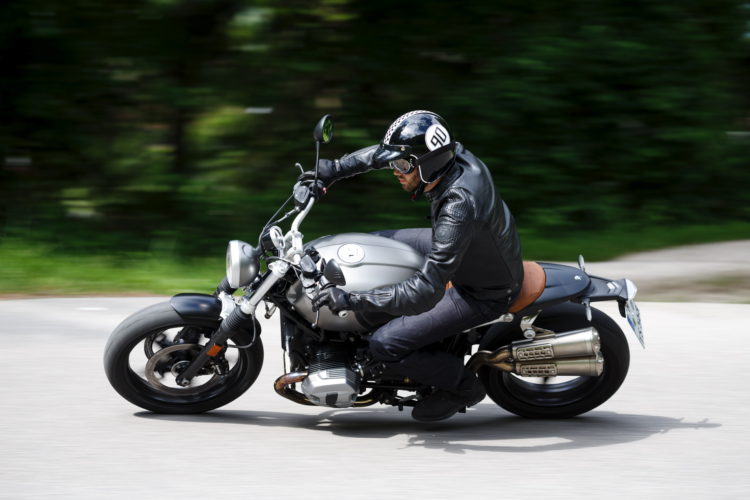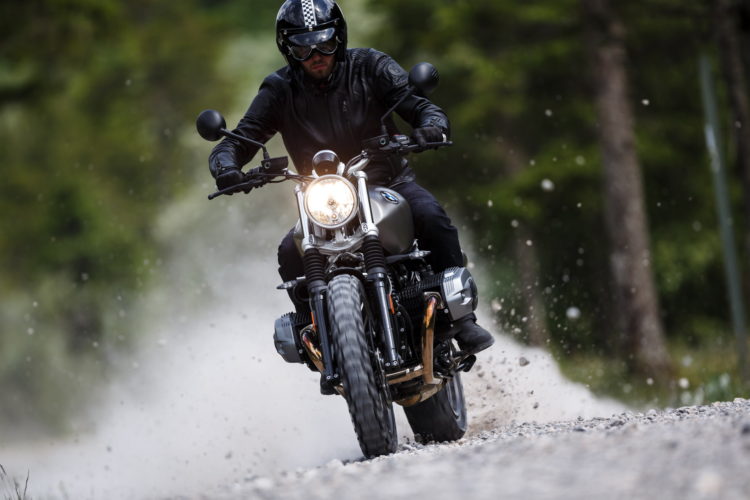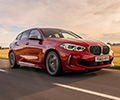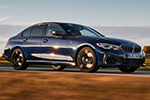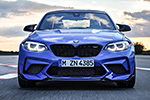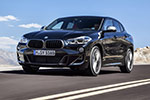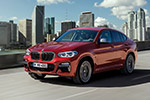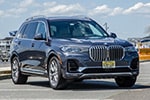When BMW Motorrad first introduced the R nineT in 2014, it was largely met with critical acclaim. Consumers too fell in love, as R nineT sales have been very strong since its market introduction. A wonderful balance between the aesthetic appeal of a classic motorcycle, as well as a significant dose of the best modernity has to offer, it was to many the perfect motorcycle. For others, it was the perfect starting point for a custom project. An example of the latter is the ‘HPT,’ built by BMW Motorcycles of San Francisco. Starting at over $15,000USD, it isn’t an inexpensive motorcycle either, making its strong sales performance even more impressive.
BMW saw the great success of the R nineT, and decided to expand its Heritage line with a slew of offerings based upon it. The first of several to come was the R nineT Scrambler. Unveiled late in 2015, the Scrambler variant drew inspiration from the original scramblers from the ’60s and ’70s, not dissimilar from modern scramblers offered by the competition, in this regard. Fast forward to today, and dealers now have R nineT Scramblers in their inventory.
Though the original R nineT and the Scrambler are very similar in many ways, there are also ways in which they are different. Too, there is a more than two thousand dollar difference in their starting prices, with the Scrambler being the cheaper of the two.
Expectations were high, obviously. However, does the Scrambler meet them or fall short? Is it a better value, or are buyers better off shelling out a bit more for the original variant? Rather than simply providing you with my opinion, I wanted to create a segment in which we bring you the perspective of the broader motorcycle media. To start, let’s take a look at ride quality.
Ride Quality:
In order to achieve the scrambler look, the tires had to be changed. Road oriented tires were traded for more balanced, on-off road tires. Cycle World’s Joseph Gustafson spoke about this in his first ride review, saying the new Metzelers “provide quite a bit of grip on the road, but do wobble in that characteristic knobby way, squirming into and out of corners.” Gustafson added, “the suspension— a serious downgrade. It crashes over bumps, juddering the entire bike, and the rear features very little damping as well.
With these changes, the Scrambler relinquishes much of the refinement that makes the R nineT so special.” He went even further, saying, “Steering is heavier as well…the bike provides less confidence.” Spurgeon Dunbar of Revzilla also spoke about handling in his review by saying, “the front end feels a bit vague, if not downright lazy, especially at lower speeds.” Dunbar noted that he “overheard” others expressing similar concerns. Zach Courts of Motorcyclist echoed this with similar sentiments, “the mysteriously enchanted handling of the nineT has disappeared in the Scrambler.” Courts pinpointed the cause of the Scramblers disappointing handling when he said, “The Scrambler’s wheelbase is a full two inches longer than the roadster’s, with three degrees more rake trail has increased by nearly half an inch. That’s a big deal.” He also noted that he found the Scrambler’s seat to be less comfortable than the original R nineT’s. Clearly, this isn’t the type of consensus that BMW Motorrad was hoping for.
Braking:
In the pursuit of a lower starting price, the brakes have been downgraded, as well. However, two of the three gentlemen didn’t find the Scrambler’s braking performance to be significantly lesser than the R nineT’s. Gustafson said, “Ratcheting down on the brakes showcases significant nosedive up front, throwing weight forward as you brake toward the apex. Thankfully, the switch to four piston, traditional mounted Brembos hasn’t sacrificed too much stopping power.” Courts added in his review, “The front brake calipers are a slightly lower spec, but they still have braided steel lines and pinch beefy, 320mm discs. The brakes are good.” Dunbar, however, noted that he though that the downgraded brakes were one of “the most notable changes” made to the Scrambler.
Off-Road Prowess:
A scrambler is, by definition, required to have at least some off-road capability. They aren’t, at all, comparable to adventure bikes, in this regard, but some light off-road ability is expected of anything claiming to be a scrambler. Dunbar speaking to the subject said, “This is a road bike with available knobby tires. If you have experience riding big bikes off-road, you can wrestle this thing down a stretch of dirt or a gravel path, but it’s not ideal.” He further elaborated by saying, “the bars are too short to properly stand up, the footpegs are back a bit too far, and the tank is way too slippery to get any grip with your knees. You’re also about three inches of suspension travel shy of something like an F 800 GS.”
Gustafson appears to have had a similar impression of the bike, in this regard, as he said, “It just doesn’t have the suspension travel to make less-experienced dirt riders like myself comfortable, and its considerable weight is felt at all times. Standing on it is an awkward task. It does have more dirt friendly enduro pegs which makes your footwork more comfortable, but once you stand up the low bars mean you’re hunched over, placing a fair amount of weight on the front end and making weight management difficult. The tank is also quite wide, making squeezing it for stability in technical sections challenging.” Hopefully Zach Courts felt differently about the Scrambler’s functionality as a scrambler?
“A few trots down some dusty dirt lanes taught me right away that this Scrambler is not built for bumps. It’s hard to call it a phony.” Yikes, but at least Courts added, “Bop along a typical gravel road, though? Hell yes!”
Power:
The motor, derived from the R nineT, should be pretty safe territory for BMW Motorrad. Courts discussed his experience of riding the Scrambler through traffic, where the torque engine could really shine, by saying, “Gobs of oil-cooled torque and a commanding feel meant shooting through traffic was a cinch. Plus, where I might miss a fairing on the freeway or a fuel gauge on a trip to the country, a no-frills scrambler feels right at home in short, city bursts and striking a pose on the curb. I could make a meal of the heavy steering and crummy fork again, but I feel like you get the point.” Dunbar said, “You’ll have to use the rev-limiter to find the 8,500 rpm redline because there is no tachometer.”
Courts also spoke of the lack of full instrumentation found on the standard R nineT, “The single gauge is clean and simple, which I can appreciate, but it also leaves out stuff I like—namely a tachometer, gear-position indicator, and air temp. Yes, all things that are easy to live without, I admit, but then again this is a $13,000 bike. Am I asking too much?” Back to power, though, Gustafson said, “The engine strums with the same attitude of the R nineT, with only a slight gurgle when you let off the throttle. The sound is more industrial than soaring braapness. But it is an opposed twin after all, a motor more known for its durability and consistency than its soundtrack.
Power is still there too, punting you with midrange strength, and moving all 485 (claimed) pounds of motorcycle with aplomb.”
Conclusion:
Gustafson concluded that rather than buying the Scrambler, prospective buyers would be better off waiting for the new Pure variant, which will be making its way to showrooms in 2017. He acknowledged that “it has no off-road intentions, but the same awesome motor, and similar design, with the same suspension and brakes, just slightly lowered and with a front 17-inch cast front wheel instead of 19.” He added, “it will cost even less than the Scrambler, something near $11,500.” Dunbar’s conclusion included, “I think BMW is missing an opportunity when it comes to this new heritage line of motorcycles. This could be the BMW to cross that generational divide. The BMW that you and your father (or mother) can agree on.”
Speaking more to BMW Motorrad’s marketing, which has tried to convey that ‘this isn’t your father’s Beamer.’ He didn’t, however, explicitly say whether or not he’d recommend the bike. Courts, on the other hand, painted the Scrambler as a motorcycle which is an exercise in style rather than substance, by saying, “This Scrambler is not about being capable in the dirt, it’s about being dressed for adventure. A stockbroker with a five o’clock shadow and tousled hair isn’t any closer to building a log cabin, but the ladies might just like it. That’s what BMW is counting on, anyway.” Contrary to Gustafson conclusion, however, which assumed that Scrambler buyers would be mostly motivated by value and cost, Courts added some interesting information which suggested that cost might not be a major consideration for the R nineT Scrambler’s target demographic. He noted that “RnineT buyers have historically had the second-highest household income of any BMW model (the K1600GTL is highest) at $150-$175k. In other words, money isn’t an issue.” In fact, if that trend continued, the Scrambler’s stiffest competition may come from other R nineT variants, rather than scramblers from Triumph and Ducati’s Scrambler sub-brand.
Now you’ve got a pretty good idea of the motorcycle media’s opinion of the new R nineT Scrambler. I, admittedly, am unsurprised that the Scrambler fell short of expectations set by its more expensive sibling, the standard R nineT. Of course, a lower starting price had to have some concomitant negative consequences. Yet, compared to other scramblers in the premium motorcycle segment, the BMW is the most expensive by far. It is also, notably, the most powerful. In all, the most important opinion, that of consumers, will trump all else. At least now, prospective buyers can manage their expectations, and can consider the Scrambler with the knowledge of its limitations and drawbacks.
Visit the Author on Instagram at @MikeAndHisBikes




